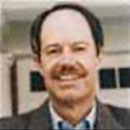The Bridge Between Steel and Art
Three essential tools on every writer's workbench should be contrast, detail and imagery. Watch how skillfully Bill Bryson handles all three devices in his paean to the Harbour Bridge in Sydney, Australia, from his delightful memoir "In a Sunburned Country."
"The opera house is a splendid edifice and I wish to take nothing away from it, but my heart belongs to the Harbour Bridge. It's not as festive, but it is far more dominant -- you can see it from every corner of the city, creeping into frame from the oddest angles, like an uncle who wants to get into every snapshot. From a distance it has a kind of gallant restraint, majestic but not assertive, but up close it is all might. It soars above you, so high that you could pass a ten-story building beneath it, and looks like the heaviest thing on earth. Everything that is in it -- the stone blocks in its four towers, the latticework of girders, the metal plates, the 6 million rivets (with heads like halved apples) -- is the biggest of its type you have ever seen. This is a bridge built by people who have had an Industrial Revolution, people with mountains of coal and ovens in which you could melt down a battleship. The arch alone weighs thirty thousand tons. This is a great bridge."
Note how Bryson paints strong contrasts in both ideas and images. He emphasizes the stolidity of the bridge by juxtaposing its arc of solid steel with the eggshell canopies of the Sydney Opera House. Then, looking through both ends of the telescope, he contrasts the bridge's restrained majesty when viewed from afar with its raw power when seen close up.
His comparisons can be monumental; we can't help picturing that 10-story building sailing under the bridge. But there's a delicacy here too in "latticework of girders" and "gallant restraint."
For Bryson, the revel is in the details. He packs his paragraph with objects we can see, touch and heft (well, maybe not heft): stone blocks, towers, metal plates, rivets, coal, ovens, even a battleship. And he knows how to add specificity with numbers, too: "6 million" rivets, "thirty thousand" tons.
His figures add up, and so do his figures of speech. Bryson's imagery ranges from metaphor ("mountains of coal") to hyperbole ("melt down a battleship") to simile ("like halved apples"). His personification of the bridge as "an uncle who wants to get into every snapshot" perfectly captures an omnipresence that is at once insistent and endearing.
Bryson's writing is as powerful and poetic as the bridge he describes.
========
Rob Kyff, a teacher and writer in West Hartford, Connecticut, invites your language sightings. His book, "Mark My Words," is available for $9.99 on Amazon.com. Send your reports of misuse and abuse, as well as examples of good writing, via email to WordGuy@aol.com or by regular mail to Rob Kyff, Creators Syndicate, 737 3rd Street, Hermosa Beach, CA 90254.
Copyright 2024 Creators Syndicate Inc.






